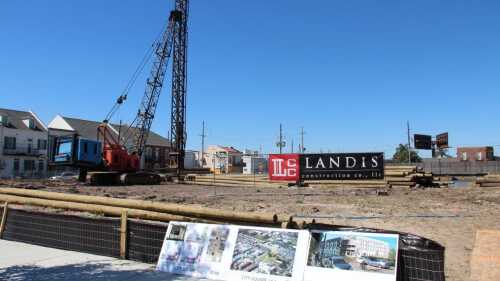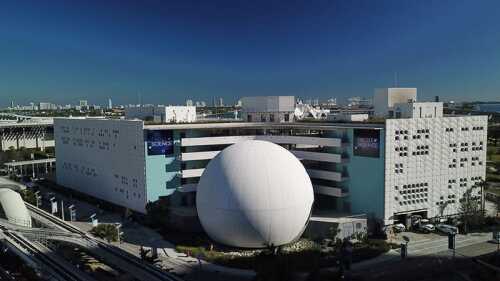Southern California has a reputation for endless freeway congestion. But traffic of another sort is far more positive here. When it comes to trade and industrial property, the enormous volume of traffic at Los Angeles’s two major ports has made the city America’s trade capital. Over the past few decades, the ports of Los Angeles and Long Beach have propelled southern California’s rise as a regional trade giant, and as a result, industrial property space throughout the Greater L.A. area has surged.
By any statistical measure, the preeminence of L.A.’s ports is obvious. According to 2011 Los Angeles trade numbers, the L.A. Customs District has ranked as the top U.S. district for imports since 1993 and has seen its total imports triple to $242.8 billion last year from $80.2 million 17 years ago. Its West Coast competitors—number eight Seattle, number ten San Francisco, and number 19 San Diego—mustered just a combined $145.5 billion in imports in 2010.
Nothing had more impact on L.A.-area trade than Asian trading partners, starting with number one China, which accounted for almost half of L.A. imports last year with $120 billion in goods, and numbers two through five—Japan, South Korea, Taiwan, and -Thailand—which combined to export almost $52 billion in goods to Los Angeles. And the volume of imports continues to climb: if 2011 projections hold, trade will set a record for the 13th time in 20 years.
But the southern California economy was not always an import goliath.
“Looking back to 1992, when you had the fall of the Berlin Wall and breakup of communism, our trade with China was $10.1 billion,” says Jim ¬MacLellan, director of trade development, Port of Los Angeles. “In that period, the two pillars of the economy were Hollywood and the defense industry. But at the end of the cold war, the military started downsizing, and this contributed to a severe recession in the early 1990s. International trade filled that gap and became the second pillar of the economy. That created employment, intermodal transportation, cargo and distribution warehouses, and a huge influx of distribution centers throughout southern California.”
That has manifested itself in the industrial property boom in Los Angeles—made possible by the two Southland ports’ unique features and the intrinsic value of the L.A. area. With deepwater ports that accommodate the largest ships requiring 52 feet (16 m) of draft—unrivaled by any of its West Coast competitors—a consumer base of over 17 million residents with extremely high levels of consumption, and an efficient intermodal rail system to push goods anywhere in the country, the conditions were in place for the import boom from fast-expanding exporters like China.
The geography of the local ports gives them a huge leg up on domestic, big-market competitors. The current CB Richard Ellis (CBRE) research regarding imports into the five largest North American markets notes that it takes a shipment from Shanghai 13 days to reach Los Angeles, compared with 18 days for Chicago, 19 for Houston, and 21 for New York City and Toronto. In addition, anything shipped to those markets still must go through the Southland because alternative routes only slow the process further. Without the L.A. ports, a shipment from Shanghai takes one extra day to reach Chicago, an extra five days to reach New York City, six days to Toronto, and 13 to Houston.
| An aerial view of the inland Empire Distribution Center in San Bernardino, California. |
This increase in L.A. port activity has, in turn, increased industrial demand in the area. According to CBRE research, a “back-of-the-envelope calculation” shows that for every 1 percent change in port 20-foot equivalent units (TEUs)—the standard measure of containerized trade—demand for industrial space changes by about 0.33 percent.
This means that the 60 percent rise in L.A.-area port activity from 2001 to 2007 led to a 20 percent increase in industrial real estate occupancy in southern California’s port markets. Conversely, the 15 percent decrease in port activity in recent years—in 2009 from the peak in 2007—led to a 5 percent decline in occupancy.
Now, thanks in large part to the dramatic increases in import volume, the L.A. Basin is home to over 1.8 billion square feet (167,000 sq m) of distribution and industrial space, making it America’s largest distribution and manufacturing center. But the location of that abundant space has changed dramatically over the past few decades, something that is no secret to San Francisco–based Prologis, the world’s largest owner, operator, and developer of industrial space.
Following its recent merger with AMB Property Corp., Prologis is estimated to have the largest industrial holdings in the southern California region with some 65 million square feet (6 million sq m) of space valued at about $5 billion. But the company’s growth began with an understanding of how the import economy—and warehouse demand—had worked its way through southern California. Initially, such demand largely stayed local, but that has changed.
“In the 1970s and 1980s, warehouse demand took place right in the South Bay region—Torrance, Long Beach, and the whole corridor near the ports,” says Hamid Moghadam, Prologis co-CEO with Walt Rakowich. “Unfortunately, they ran out of land in those areas. And with the 2002 opening of the Alameda Corridor [the freight rail system serving the ports], a lot of these containers were easier shipped out to the Inland Empire”—the San Bernardino–¬Riverside area of eastern Los Angeles County.
For Rakowich, movement into the Inland Empire seemed unfathomable initially. He recalls speaking with a client of one of his largest warehouse spaces in the city of Commerce, located about seven miles (11.2 km) southeast of downtown L.A., in the early 1980s when large customers began moving to industrial space in the Inland Empire for the first time. “I remember saying to them, ‘Are you kidding me? You’re actually going to take a space 30 miles [48 km] east of here? That’s crazy,’” Rakowich says. “At the time, it was one farm after the next. There was almost nothing else there.”
That is not the case anymore. Today, the biggest issue is lack of land availability, Rakowich says. The Inland Empire developed into a submarket of 200 million to 300 million square feet (18.6 million to 27.9 million sq m), he says. “As ports have doubled and tripled in volume, you’ve seen a tremendous need for distribution space,” he says. “Much of that is now in the Inland Empire.”
In 2007, business in that former farmland—and throughout southern California—was booming. L.A.’s total imports surpassed $249 billion that year for yet another record high—music to the ears of eastward-bound, industrial property expansionists.
By 2008, though, the global recession hit U.S. shores and L.A. imports declined—by about $2 billion—for only the second time in two decades; the next year, they plummeted by more than $50 billion, leaving the industrial property bubble on the brink of bursting, but also opening the door for opportunistic companies—such as KTR Capital Partners—to leap into an industrial property marketplace they had not previously occupied.
Over the next two years, starting with the recession in late 2008, KTR analyzed the quickly changing landscape in the deeper parts of the Inland Empire and acted. “You had strong, tangible demand that was driving supply. But as markets overheated, supply began to exceed demand,” says KTR partner John P. DiCola. “You went from a marketplace characterized by very low vacancy of 5 percent or less to one that spiked north of 10 percent.”
Monthly rents entered a steep decline, DiCola says, especially in the Inland Empire, falling from the low 30 to 40 cents per square foot ($3.23 to $4.30 per sq m) in the west and low to mid-20 to mid-30 cents ($2.15 to $3.23 per sq m) in the east, to the low 20s overall. Soon afterward, KTR decided to make its move, despite having only one industrial asset in the region, totaling less than 1 million square feet (93,000 sq m).
“We adapted to it,” DiCola says. “At the end of 2008 and beginning of 2009, we could see the market was deteriorating, but we had yet to really jump into industrial property in a significant fashion. We recognized we could pick up good, quality assets. We liked the relative value proposition at that pricing and were one of first investors to do it.” From the end of 2009 to today, KTR has been among the most active buyers in the industrial marketplace, specifically in southern California, and now has up to 9.5 million square feet (883,000 sq m) or industrial space, he says.
| One of KTR Capital Partner’s holdings in |
Such purchases are based on an understanding of Los Angeles’s importance as a leader of Pacific Rim trade and a global commerce hub. If the early returns this year are any indication, the recovery in the industrial sector is continuing in different parts of the Southland. CBRE’s second-quarter 2011 MarketView reports net absorption in the Inland Empire of 2.7 million square feet (251,000 sq m); meanwhile, the northern L.A. region experienced its fourth-¬consecutive positive quarter.
“We’re on target in the Inland Empire to absorb 12 million square feet [1.1 million sq m] this year and predict that the Los Angeles market will also double,” says Darla Longo, an industrial specialist at CBRE. “That growth is driven by the ports.”
However, the landscape regarding industrial property—as well as the region’s position as an import-based economy—is changing fundamentally, even with growth in the first half of this year. The old Inland Empire farms no longer exist to meet growing demand for industrial space. Instead, developers will either have to trek farther from the urban core or change the ways they use existing space, or both.
“Growth will expand as necessary to accommodate user demand,” Longo says. “With the buildings close to the port, companies are redesigning and refurbishing older facilities. Those that have become inefficient because of land constraints will get torn down, and new buildings will go to the Inland Empire east and to desert locations, such as Victorville.”
Longo also points out that California’s tough entitlement laws create obstacles to erecting larger buildings. “It’s much more of a challenge to entitle a large building than a smaller building,” she says. “Once you build over 400,000 [square] feet, it goes to public review, and the public can object.”
Nonethless, in the second quarter of 2011 alone, three of the five largest industrial spaces in the country were built in California—all in Riverside and larger than 700,000 square feet (65,000 sq m), with two occupied by Home Depot and one occupied by Smuckers.
But even with new large-scale projects, only so much space is available. Moghadam suggests a solution. “I think buildings in the L.A. area will be more intensively used,” he says. “These will be multistory buildings, similar to what you see of Japan, where the average warehouse is four to six stories and where they know how to get more out of limited land.”
One part of the equation is obvious: the ports of Los Angeles and Long Beach are here to stay as major players in international trade. At the moment, the expansion of the Panama Canal presents a major possible threat to traffic at the ports. The larger-capacity canal—scheduled to debut in 2014—will allow many East Coast–bound ships to bypass California entirely. And the potential for growth in places such as Oakland, San Diego, and Seattle through possibly dredging their ports to accommodate larger ships could also mean more competition for Los Angeles. But Panama presents security and efficiency concerns, and budget constraints may affect the dredging plans of the city’s West Coast competitors. L.A.’s crown appears to be safe for the foreseeable future.
“We believe in the primacy of southern California as the top gateway,” KTR’s DiCola concludes. Adds Longo, “At the end of the day, activity keeps reverting back to L.A. and Long Beach. Southern California is going to remain the industrial engine.”






